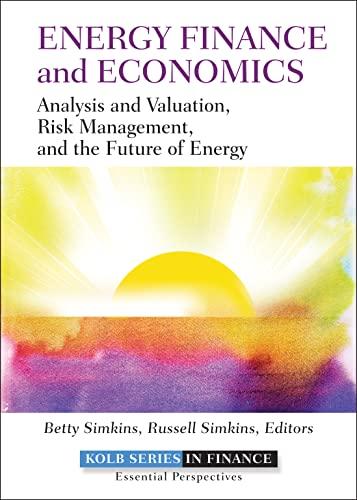

3. The president of the company you work for has asked you to evaluate the proposed acquisition of a new chromatograph for the firm's R&D department. Besides basic price, the equipment would cost additional $20,000 to modify it for special use by your firm. The chromatograph, which falls into the MACRS 3-year class, would be sold after 3 years for $50,000. The MACRS rates for the first three years are 0.3333, 0.4445, and 0.1481. Use of the equipment would require an increase in net working capital (spare parts inventory) of $5,000, but it would be recovered at the end of the project's 3 year life. The machine would have no effect on revenues, but it is expected to save the firm $20,000 per year in before-tax operating costs, mainly labor. Input Data Machine basic price Modification cost Salvage value at year 3 Working capital Annual cost saving Tax rate $65,000 $20,000 $50,000 $5,000 $20,000 35.00% a. What is the Year 0 net cash flow? Year 0 net CF b. What are the net operating cash flows in Years 1, 2, and 3? Depreciation Schedule Depreciable basis Year's Depreciation rate Depreciation Remaining Book Value 1 33.33% 2 44.45% 3 14.81% Net Operating CF Annual cost saving Depreciation EBIT(1-T) Depreciation Net Operating CF c. What is the additional Year-3 cash flow? Salvage value Book value Gain or loss Tax on salvage value After-tax salvage value Return of working capital Additional year 3 cash flow d. What is the NPV? Cost of capital 9.00% Years Cost of capital 9.00% Year's 0 1 1 2 3 Net Cash Flow NPV=I e. Assume management is unsure about the $20,000 savings this figure could deviate by as much as plus or minus 15%. What would the NPV be under each of these extremes? NPV % Deviation Cost savings 15% 15% f. Suppose the CFO wants you to do a scenario analysis with different values for the cost savings, the equipment's salvage value, and the working capital (WC) requirement. She asks you to use the following probabilities and values in the scenario analysis: Scenario Best case Base case Worst case Probability 0.35 0.35 0.3 Cost Savings $25,000 $20,000 $17,000 Salvage Value $60,000 $50,000 $40,000 WC $4,000 $5,000 $6,000 Calculate the project's expected NPV, its standard deviation, and its coefficient of variation. Would you recommend that the project be accepted? NPV Scenario Best case Base case Worst case Probability 0.35 0.35 0.3 Expected NPV - Standard Deviation = Coefficient of Variation = 3. The president of the company you work for has asked you to evaluate the proposed acquisition of a new chromatograph for the firm's R&D department. Besides basic price, the equipment would cost additional $20,000 to modify it for special use by your firm. The chromatograph, which falls into the MACRS 3-year class, would be sold after 3 years for $50,000. The MACRS rates for the first three years are 0.3333, 0.4445, and 0.1481. Use of the equipment would require an increase in net working capital (spare parts inventory) of $5,000, but it would be recovered at the end of the project's 3 year life. The machine would have no effect on revenues, but it is expected to save the firm $20,000 per year in before-tax operating costs, mainly labor. Input Data Machine basic price Modification cost Salvage value at year 3 Working capital Annual cost saving Tax rate $65,000 $20,000 $50,000 $5,000 $20,000 35.00% a. What is the Year 0 net cash flow? Year 0 net CF b. What are the net operating cash flows in Years 1, 2, and 3? Depreciation Schedule Depreciable basis Year's Depreciation rate Depreciation Remaining Book Value 1 33.33% 2 44.45% 3 14.81% Net Operating CF Annual cost saving Depreciation EBIT(1-T) Depreciation Net Operating CF c. What is the additional Year-3 cash flow? Salvage value Book value Gain or loss Tax on salvage value After-tax salvage value Return of working capital Additional year 3 cash flow d. What is the NPV? Cost of capital 9.00% Years Cost of capital 9.00% Year's 0 1 1 2 3 Net Cash Flow NPV=I e. Assume management is unsure about the $20,000 savings this figure could deviate by as much as plus or minus 15%. What would the NPV be under each of these extremes? NPV % Deviation Cost savings 15% 15% f. Suppose the CFO wants you to do a scenario analysis with different values for the cost savings, the equipment's salvage value, and the working capital (WC) requirement. She asks you to use the following probabilities and values in the scenario analysis: Scenario Best case Base case Worst case Probability 0.35 0.35 0.3 Cost Savings $25,000 $20,000 $17,000 Salvage Value $60,000 $50,000 $40,000 WC $4,000 $5,000 $6,000 Calculate the project's expected NPV, its standard deviation, and its coefficient of variation. Would you recommend that the project be accepted? NPV Scenario Best case Base case Worst case Probability 0.35 0.35 0.3 Expected NPV - Standard Deviation = Coefficient of Variation =








